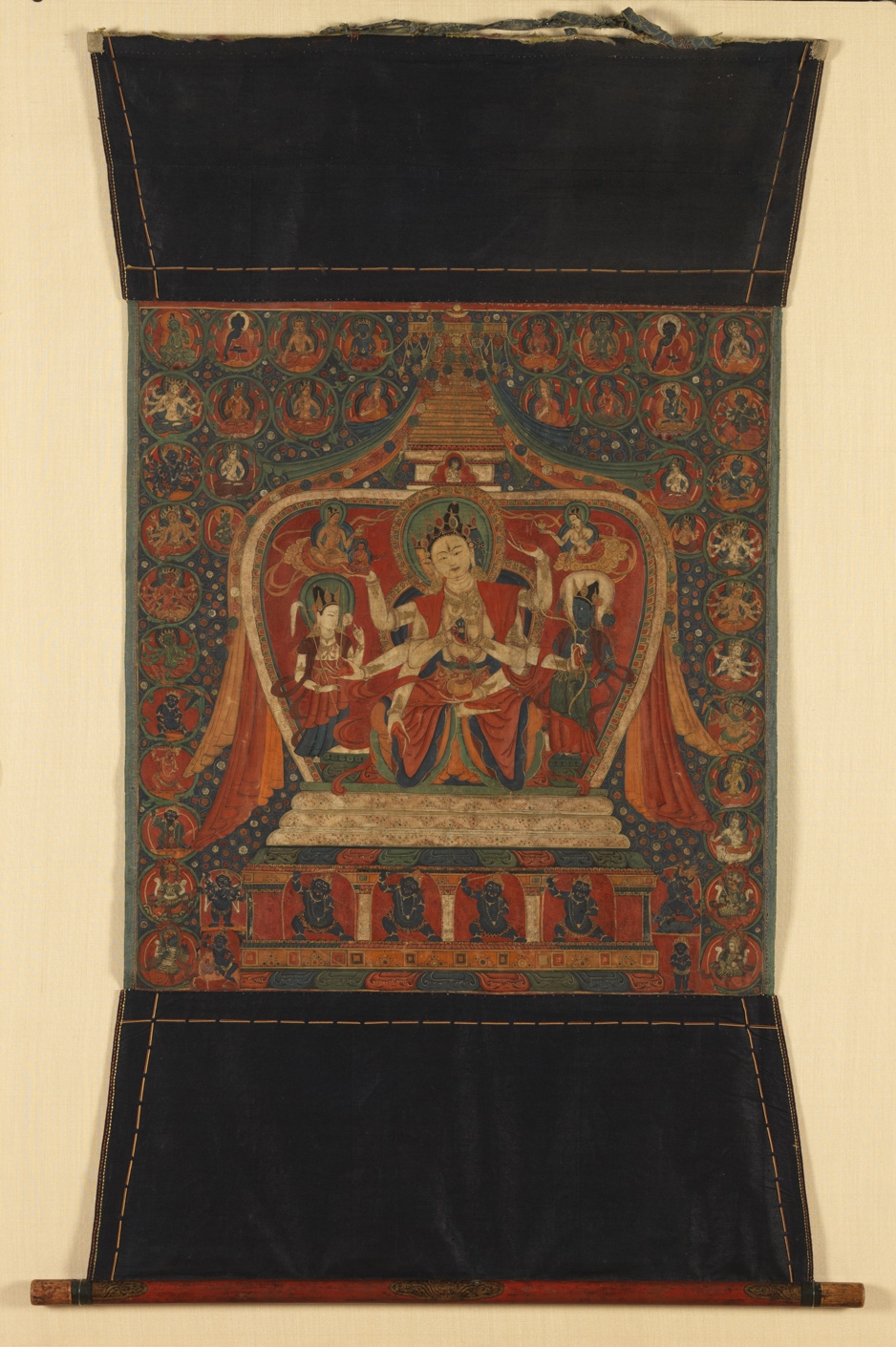
Here the eight-armed goddess of long life Ushnishavijaya sits framed by an ornate stupa. An inscription on the back follows the shape of the stupa. A tiny representation of Buddha Vairochana, the goddess’s primary buddha sits just above the dome of the stupa.
The fifteenth century marks a period of transition in Tibetan painting. While works from this time adhere to organizational principles inherited from India and Nepal, the usual strict, grid-like compartmentalization of the figures has transformed into rows of circular cell-like enclosures made of scrolling vines. Paintings of this period also feature more distinctive Tibetan architecture and often emphasize an auspicious backdrop of blossoms, features that are both evident in this work. Stylistically this painting relates to the famous murals of the Kumbum, in Gyantse, southern-central Tibet.
20 1/4 x 18 1/2 in.
F1998.17.1, HAR663
- https://dev.rubinmuseum.org/images/content/808/f1998.17.1-sm__zoom.jpg
- https://dev.rubinmuseum.org/images/content/808/f1998.17.1-sm__zoom.jpg

